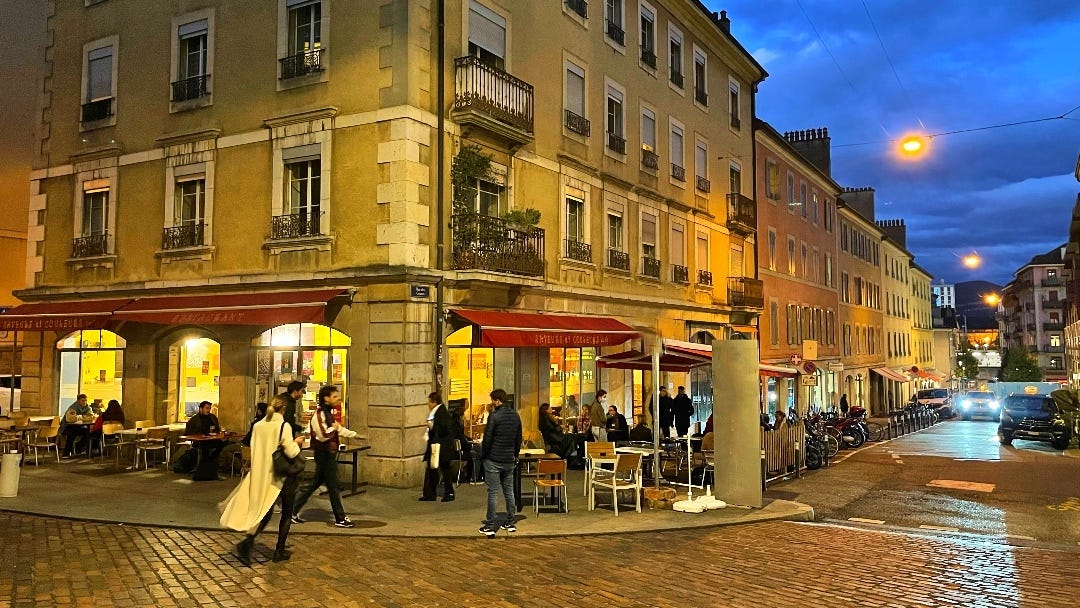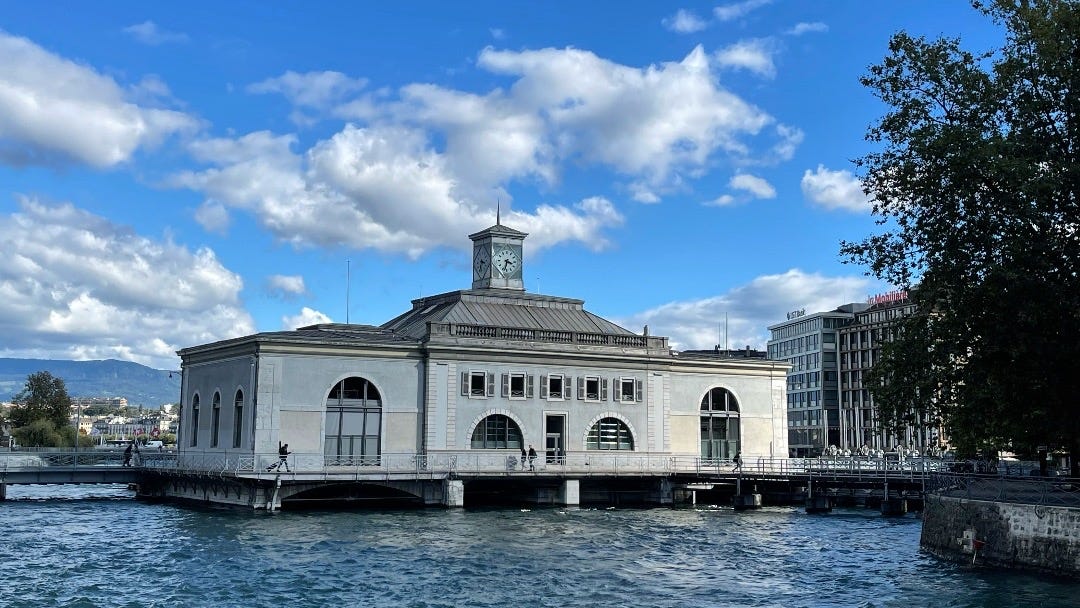There are cities in the world where I have either lived or that I have visited so often for many years that I feel at home when I am back. Geneva is one of them; London, New York City, Vienna, Brussels, Stockholm, or Paris are a few others I feel like I know my way around. And then there are, of course, several cities in my own country, the Netherlands, where I can't walk around without lots of memories.
My oldest memory of Geneva is arriving by car with my parents on a summer holiday in the late 1970s or early 1980s; I was sitting in the back seat, trying to be the first of us to see the famous Jet d'Eau (a very high fountain in the lake).
The Ottawa Convention
In the late 1990s and the first years of this millennium, the international cooperation on the landmine problem frequently brought me back to Geneva. The Ottawa Convention, which bans anti-personnel mines and aims to stop the worldwide humanitarian landmine tragedy, had just been negotiated and signed but still needed to be ratified by as many countries as possible. NGOs and governments cooperated to ensure that more countries would join and that the promises made in this treaty would lead to concrete action.
In those years, we realized that many landmine victims had not stepped on an actual anti-personnel mine (a distinction from bigger ones designed to destroy a vehicle or a tank) but on unexploded ordinance. But, of course, it may have been hardly relevant for the victims since the deadly or mutilating effect was just as horrific.
Still, from a perspective of international law, it made a huge difference. A landmine is designed and used to explode when triggered, for instance, by an enemy combatant stepping on it. But all kinds of unexploded ordinance, like mortars, or cluster bombs, often had the effect of landmines but were never meant to be left unexploded. Instead, they were Explosive Remnants of War, weapons that kept fighting long after a war had ended just as landmines did.
Drafting a treaty
The Ottawa convention was practically irrelevant for these weapons since they didn't fall under the definition of anti-personnel mines. Therefore, the International Committee of the Red Cross, the ICRC, informally suggested that a treaty was needed to regulate the use of these weapons. I spent a Christmas holiday drafting the first version of what such a treaty could look like as a new protocol under the existing treaty known as the Certain Conventional Weapons Convention.
Soon after, I organized an Explosive Remnants of War conference in The Hague, while the ICRC organized one in Nyon, near Geneva. I also met in small groups to improve the informal first draft. These efforts resulted in a mandate to negotiate a new protocol under the existing treaty, chaired by the Netherlands; my draft was used as the first framework of the new protocol. I was proud that after three years, this led to a new treaty that became the CCW's fifth protocol.
You have likely never heard of it; it is a little-known convention, and so are its protocols. Unfortunately, the language on some of the most promising elements had been weakened to achieve the required consensus among all states party to the CCW. Most notably, the treaty didn't have the teeth to stop the humanitarian suffering caused by the use of cluster bombs. Just around that time, horrible examples of the suffering caused by these weapons created momentum to take much firmer steps, which led to a smaller group of countries agreeing on a convention against clusterbombs.
Explosive Remnants of War
In many ways, you could say that it was a repetition of the Ottawa process that resulted from insufficient strong measures in the amended second protocol of the CCW. But it was a logical order: you first try to find agreement with as many countries as possible. Only after that proves to be insufficient, you may go further with a smaller group, which happens only in some circumstances. By that time, after six years of working on landmines and Explosive Remnants of War, I had moved on and lived and worked already on other issues in Vienna, a city that I added in my list in the opening paragraph as one where I feel at home.
I always kept coming back to Geneva, for instance, for meetings on transboundary water issues. In the past six years, I have frequently come to Geneva to speak at the Geneva Centre for Security Policy, where I am an Associate Fellow. When I walk the streets of Geneva, many memories of all these years come back.
Photos
All this was a long introduction to some photos that I wanted to share from Geneva. Enjoy the virtual travel:

If you are a paying subscriber: thank you for your support!
I write this newsletter because I believe that together we can do better on this beautiful but fragile planet.
This newsletter is an independent production. Accordingly, I have never accepted any advertising offers. I also aim to make as many editions as possible available for free.
Support from those who can afford it makes this independent newsletter available to all.
You can join this initiative by taking a paid subscription.
If the cost of this newsletter ($6/month, $60/year) would create any financial strain, please stay on the free list; I value all readers.














You have such an interesting career, Alexander, and one of value to the third world particularly.
Kudos! Your photos are awesome Alexander, and what an important story about your work. Yes. sadly, being aware today that Exotic beaches and other places, that can still be dangerous to walk on is still a must. I also learned that we have additional help from the Giant bomb sniffing rats and their handlers, and, other types of rats. Including sniffing for diseases. If you are not squirmy see this amazing video, https://www.youtube.com/watch?v=GBqMJjfSgYY - Thank you!!